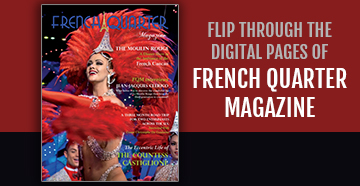Exploring Innovative Materials in Invitation Design Trends
In a world of ever-evolving design trends, invitations play a crucial role in setting the tone for special occasions. The choice of materials significantly influences the overall aesthetics and appeal of invitations. This article delves into the exciting realm of innovative materials in invitation design trends, exploring the diverse options available and their impact on the industry.
Invitation design is an art form that continually evolves with the times. From classic and traditional to modern and avant-garde, the design landscape is vast and diverse. One of the key elements shaping this landscape is the innovative use of materials, and with the help of an invitation card maker, designers can explore new possibilities to create stunning and unique invitations.
I.Importance of Materials in Invitation Design Trends
Materials form the foundation of any invitation. They contribute to the visual appeal, tactile experience, and overall impression. With advancements in technology and a growing emphasis on sustainability, designers are now experimenting with a wide range of materials to create invitations that are not only visually stunning but also eco-friendly.
II. Traditional Materials
When it comes to invitations, traditional materials like paper, cardstock, and envelopes have long been staples. These materials offer a timeless and elegant appeal, making them suitable for various occasions.
III. Emerging Trends in Invitation Design
A. Incorporation of Eco-Friendly Materials
As environmental consciousness grows, designers are increasingly turning to eco-friendly options. Recycled paper, plant-based materials, and biodegradable alternatives are becoming popular choices, aligning invitation designs with sustainability goals.
B. Metallic Accents for a Modern Touch
For those seeking a contemporary look, metallic accents provide a sleek and modern touch. Incorporating metallic foils, finishes, or even using metallic paper adds a touch of luxury to invitations.
C. Use of Unconventional Textures
Designers are exploring unconventional textures to add depth and uniqueness to invitations. From embossed patterns to textured paper, these materials engage both the visual and tactile senses.
IV. Sustainable Materials
A. Recycled Paper Options
Recycled paper, sourced from post-consumer waste, offers an eco-friendly alternative without compromising on quality. Designers are creatively using recycled paper to craft invitations with a positive environmental impact.
B. Plant-Based Materials
Invitations made from plant-based materials, such as bamboo or cotton paper, provide a natural and sustainable option. These materials not only look exquisite but also contribute to reducing the carbon footprint.
C. Biodegradable Alternatives
In the quest for eco-conscious choices, biodegradable alternatives like seed paper are gaining popularity. These invitations can be planted after use, transforming into blooming flowers—a unique and sustainable concept.
V. High-Tech Materials
A. Introduction of Electronic Invitations
In the digital age, electronic invitations are making waves. With interactive features, animations, and personalized digital experiences, electronic invitations offer a dynamic and modern alternative.
B. Smart Materials for Interactive Designs
Incorporating smart materials, such as conductive inks or embedded technology, allows for interactive designs. Imagine invitations that light up or play a sound when touched—a fusion of technology and creativity.
VI. Customization with Innovative Materials
A. Personalized Textures and Finishes
Innovative materials open the door to personalized textures and finishes. Designers can tailor invitations to match the theme or style of an event, creating a unique and memorable experience for recipients.
B. Unique Color Combinations
Experimenting with color is made easier with innovative materials. From vibrant hues to subtle pastels, the range of colors available allows for endless possibilities, ensuring invitations stand out.
C. Incorporating Multimedia Elements
Beyond the visual and tactile, multimedia elements can be integrated into invitations. Video screens, sound modules, or augmented reality features elevate the invitation experience, making it truly unforgettable.
VII. Artistic Possibilities with Innovative Materials
A. Incorporating Handcrafted Materials
Artisanal and handcrafted materials bring a touch of craftsmanship to invitations. From handmade paper to intricate detailing, these materials add an artistic flair that resonates with those seeking bespoke designs.
B. Collaborations with Artists for Exclusive Designs
Collaborations between designers and artists result in exclusive designs that push the boundaries of creativity. Unique materials, combined with artistic vision, create invitations that are not just functional but also pieces of art.
VIII. Budget-Friendly Options
A. Affordable Innovative Materials
Contrary to common perception, innovative materials need not break the bank. There are budget-friendly options that allow for creative expression without compromising on quality. Designers can explore cost-effective materials to cater to a broader audience.
B. Tips for Cost-Effective Invitation Designs
Providing practical tips on how to achieve cost-effective designs with innovative materials ensures that creativity remains accessible to all. From strategic material selection to efficient design techniques, there are ways to create stunning invitations on a budget.
IX. Impact of Material Choices on the Environment
A. Importance of Eco-Conscious Choices
Acknowledging the environmental impact of design choices is crucial. The article explores how opting for sustainable materials in invitation design contributes to a more eco-conscious and responsible industry.
B. Reducing Environmental Footprint in Invitation Design
Designers can play a pivotal role in reducing the environmental footprint of invitations. From sourcing materials responsibly to encouraging recycling, the article outlines actionable steps for a greener design approach.
X. Practical Considerations
A. Durability of Materials
While aesthetics are essential, practical considerations like the durability of materials cannot be overlooked. The article discusses how designers can strike a balance between visual appeal and functionality.
B. Mailing and Handling Considerations
Invitations go through various stages, from creation to delivery. Understanding how materials withstand the mailing and handling process ensures that the final product reaches recipients in pristine condition.
C. Choosing Materials Suitable for Various Occasions
Different occasions call for different styles. The article guides readers on choosing materials that align with the tone and theme of specific events, ensuring that invitations are a seamless part of the overall experience.
XII. Challenges and Solutions
A. Common Challenges Faced with Innovative Materials
Acknowledging challenges is part of the design process. The article discusses common challenges designers may face when working with innovative materials, fostering a realistic understanding of the creative journey.
B. Creative Solutions to Overcome Obstacles
Every challenge presents an opportunity for innovation. Providing creative solutions empowers designers to overcome obstacles, fostering a resilient and adaptable approach to working with innovative materials.
XIII. Future Trends
A. Predictions for Upcoming Materials in Invitation Design
Anticipating future trends in materials allows designers to stay ahead of the curve. The article explores predictions for upcoming materials that may revolutionize invitation design in the coming years.
B. Anticipated Advancements in Technology and Sustainability
Advancements in technology and sustainability will undoubtedly shape the future of invitation design. Examining the intersection of these two forces provides a glimpse into the exciting possibilities on the horizon.
XIV. Expert Tips for Choosing Materials
A. Insights from Invitation Designers
Drawing on the expertise of invitation designers, the article offers valuable insights into the material selection process. Tips from professionals guide readers in making informed choices for their own design projects.
B. Recommendations for Selecting the Right Materials
Providing practical recommendations ensures that readers leave with actionable advice. From understanding the event context to considering personal preferences, the article equips designers with the knowledge needed to choose the right materials.
XV. Conclusion
In conclusion, the article reflects on the transformative impact of innovative materials on invitation design. From enhancing aesthetics to promoting sustainability, materials play a pivotal role in shaping the future of this creative field. By exploring innovative materials, designers can not only create an invitation but also contribute to a more sustainable and conscious industry.























I love the information; i never thought about it; thank you so much